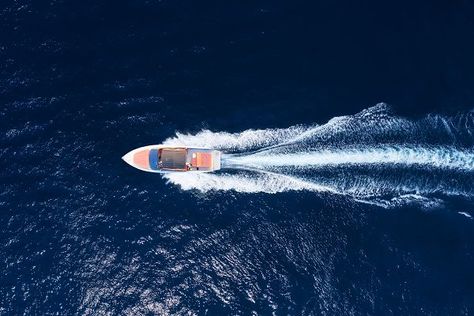The call of the open sea resonates with many, conjuring images of sun-drenched horizons, the thrill of exploration, and the peaceful solitude of distant waters. Buying a boat is not just a purchase; it’s an investment in a lifestyle, a passport to freedom, and a ticket to adventures yet untold. Whether you’re envisioning weekend getaways, fishing excursions, or circumnavigating the globe, selecting the right boat is a journey that requires careful navigation. This comprehensive guide is designed to steer you through the complexities of buying your dream boat, ensuring your seafaring future is as bright and boundless as the oceans themselves.
1. Setting Your Sailing Goals
The first step in your boat buying journey is to clearly define what you want to achieve on the water. Your maritime aspirations will significantly influence the type of vessel that best suits your needs. Consider whether your primary goal is leisurely coastal cruising, offshore fishing, competitive racing, or extended voyages across the blue expanses. Each of these pursuits demands different features and capabilities from a vessel, from the ruggedness and storage of an offshore fishing boat to the comfort and autonomy of a long-distance cruiser.
2. Understanding the Different Types of Boats
The diversity of boats available today is as vast as the waterways they navigate. Here’s a deeper dive into the types of vessels you might consider:
- Sailing Yachts: For those drawn by the art of sailing, these vessels offer a blend of tradition and challenge, harnessing the wind to journey across the waves.
- Motor Yachts: Combining luxury and power, motor yachts are ideal for those who seek comfort and have ambitions of cruising long distances or living aboard.
- Fishing Boats: Built with durability and stability for tackling rough seas, fishing boats are equipped for both casual anglers and serious offshore fishing enthusiasts.
- Sport Boats: Designed for speed and agility, sport boats are perfect for adrenaline-pumping activities like waterskiing, racing, or simply a fast cruise on a sunny day.
- Catamarans and Trimarans: Offering stability, space, and efficiency, these multi-hulled vessels are suited for both leisurely cruises and adventurous voyages.
- Dinghies and Tenders: Small and versatile, these boats are often used for short trips between shore and a larger boat, or as compact options for casual boating.

3. Deciphering the Financials: Budgeting for Your Boat
Embarking on boat ownership requires a realistic assessment of your budget, not just for the initial purchase but for the ongoing costs associated with boating. Maintenance, docking fees, insurance, and operational expenses (such as fuel) can add up. Factor in the cost of any upgrades or customizations you may desire to truly make the vessel your own. Opting for a used boat can offer savings, but be mindful of the potential for higher maintenance costs.
4. Evaluating New vs. Used
The decision between buying new and purchasing a used boat is pivotal. New boats come with the latest features, warranties, and the peace of mind that comes with being the first owner. On the other hand, used boats can provide considerable value, often allowing you to acquire a larger or more equipped vessel for your budget. However, the history and condition of a used boat are critical; a thorough inspection and understanding of its maintenance and repair history are essential.
5. The Importance of a Sea Trial and Inspection
Never finalize a boat purchase without a comprehensive inspection and a sea trial. The inspection should cover the boat’s hull, systems, and equipment, ensuring everything is in working order or identifying any issues that need addressing. A sea trial, meanwhile, offers insights into the boat’s handling, performance, and overall seaworthiness. It’s also an opportunity to ensure the boat meets your expectations in terms of comfort, speed, and handling.
6. Financing Your Dream
Exploring financing options early in your boat buying journey is advisable. Many buyers opt for marine loans, which are specifically designed for the purchase of boats. Understand the terms, interest rates, and down payment requirements of these loans to find the best financing solution for your situation.
7. The Closing Process
Once you’ve found the perfect boat and are ready to proceed with the purchase, understanding the closing process is crucial. This involves final negotiations, securing financing, and handling the necessary paperwork, including the bill of sale, registration, and any required documentation if buying from another country. Employing the services of a professional broker or legal advisor can streamline this process, ensuring all legal and regulatory requirements are met.
8. Embracing the Boating Lifestyle
Owning a boat is more than just possessing a means to traverse water; it’s about embracing a lifestyle. Whether you’re drawn to the tranquility of solo sails at dawn, the camaraderie of cruising with family and friends, or the thrill

